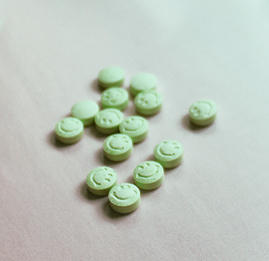3-MeO-PCP

3-Methoxyphencyclidine (3-MeO-PCP) is a dissociative anesthetic drug that is sold online as a research chemical. The effects are often described as being more euphoric and mentally clearer than many related compounds.
History
A 1965 article published by Maddox described the synthesis of 2-MeO-PCP and 4-MeO-PCP. Preparation of 3-MeO-PCP was described later in 1979 by Geneste et al.
The compound was first synthesized in 1979 to investigate the structure-activity relationship of phencyclidine derivatives. The activity of 3-MeO-PCP in man was not described until 1999 when a chemist using the pseudonym John Q. Beagle wrote that 3-MeO-PCP was qualitatively similar to PCP with comparable potency.
Dosage
3-MeO-PCP, like PCP is active in the single milligram range and therefor can be hard to accurately measure.
Most if not all consumer-grade jewelry-scales advertised as working at the 0.001g (mg) range are not reliably accurate enough to measure quantities weighing less than around 15-25 mg depending on the model and calibration. With a drug as potent as 3-MeO-PCP a small discrepancy in measurement can make a world of difference in physical and mental response to the dose. It is for these reasons that it would be in one's best interest to use a volumetric dose measurement technique as outlined in this guide.
| Threshold | 1.5-3 mg |
| Light | 3-5 mg |
| Common | 5-10 mg |
| Strong | 10-15 mg |
| Heavy | 15-18 mg+ |
| Threshold | 1-2 mg |
| Light | 2-5 mg |
| Common | 5-8 mg |
| Strong | 8-12 mg |
| Heavy | 12-15 mg+ |
Duration
| Onset | 20-40 minutes |
| Total | 3-5 hours +/- 60 minutes, dependent on dose. |
| After-effects | 2-48 hours |
| Onset | 10-30 minutes |
| Total | 2-4 hours +/- ~30 minutes, dependent on dose. |
| After-effects | 2-48 hours |
Effects
Positive
- Increase in energy / stimulation
- Euphoria
- Pleasant mental and/or body high
- Music appreciation
- Disconnected thoughts
- Sense of calm
- Increased sociability, loss of inhibitions
- Closed and open-eye visuals
- Shifts in perception of reality
Neutral
- Increased heart rate (lower doses)
- Altered time perception
- Disrupted speech patterns
- Analgesia (decreased pain awareness) and numbness
- Distorted sensory perceptions, hallucinations
- Unusual and unpredictable behavior
- Mild to moderate dissociation
- Confusion, disorientation
Negative
- Disturbing hallucinations and/or delusions
- Anxiety, paranoia
- Severe dissociation, depersonalization
- Ataxia (loss of motor coordination)
- Psychotic episodes
- Nausea, vomiting
- Temporary amnesia
- Severe distortion or loss of auditory/visual perception
Harm Reduction
- 3-Meo-PCP is a very powerful NMDA antagonist (doses are on par with PCP), and as such it has the potential to be very confusing.
- 3-MeO-PCP is considered to be a 'research-chemical', simply meaning that there is little to no clinical data on long-term effects.
- 3-MeO-PCP, as with all arylcyclohexylamine class dissociative compounds may cause neurotoxicity when used frequently or in high dose.
- 3-MeO-PCP acts as a mild Serotonin Reuptake Inhibitor and as such may risk adverse effects as a result of synergy when used with certain serotogenic drugs or medications. See Interactions.
- It is difficult to measure 3-MeO-PCP accurately with a scale because it is active in the 1-10 mg range. See the dosage section for more information.
- 3-MeO-PCP has a steep dose-response-curve and an onset ranging from approximately 20-40 minutes. It is inadvisable to redose, especially within the first hour.
For more information see Dissociative Harm-Reduction.
Interactions
Check out our Drug Combinations page and chart for interactions and combinations of common drugs. PCP and 3-MeO-PCP have similar profiles and as such its safe to assume the PCP combination-chart data also applies to 3-MeO-PCP.
Specifically, do not mix 3-MeO-PCP with alcohol or benzodiazepines. 3-MeO-PCP will also likely produce synergistic effects if used in conjunction with certain serotogenic medications or drugs.
Chemistry and Pharmacology
3-MeO-PCP binds to the NMDA receptor with higher affinity than PCP and has the highest affinity of the three isomeric anisyl-substitutions, followed by 2-MeO-PCP and 4-MeO-PCP. It is also a Serotonin Reuptake Inhibitor (SRI).
3-MeO-PCP hydrochloride is a white crystalline solid with a melting point of 204-205°C.
3-MeO-PCP has a Ki of 20 nM for the NMDA receptor, 216 nM for the serotonin transporter and 42 for the sigma1 receptor.
Legal status
UK: Class B, as are all arylcyclohexamines.
US: Covered by the analogue act if sold for human consumption.